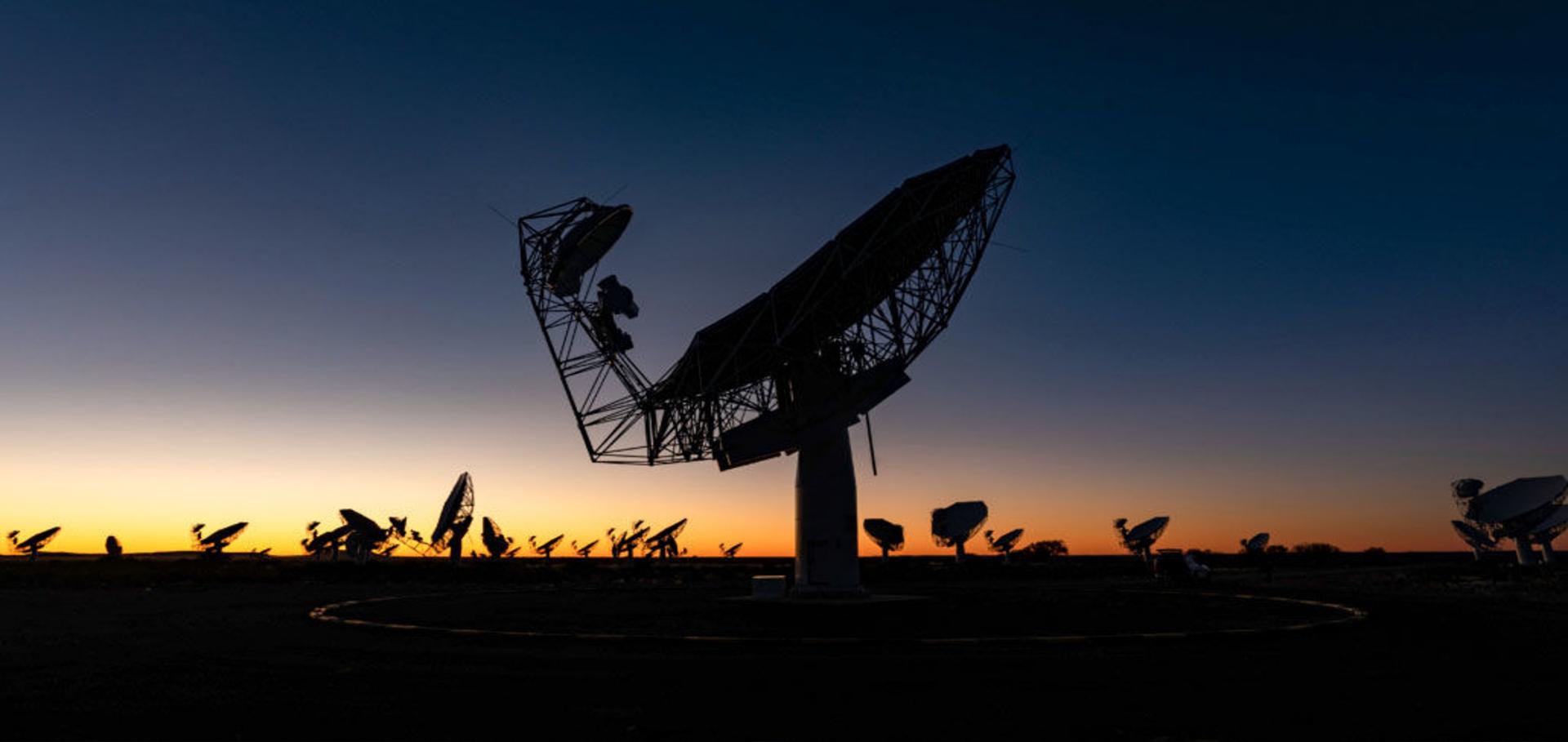Measuring the baryonic Tully-Fisher relation below the detection threshold
Monthly Notices of the Royal Astronomical Society Oxford University Press 508:2 (2021) 1897-1907
Abstract:
We present a novel 2D flux density model for observed H i emission lines combined with a Bayesian stacking technique to measure the baryonic Tully-Fisher relation below the nominal detection threshold. We simulate a galaxy catalogue, which includes H i lines described with either Gaussian or busy function profiles, and H i data cubes with a range of noise and survey areas similar to the MeerKAT International Giga-Hertz Tiered Extragalactic Exploration (MIGHTEE) survey. With prior knowledge of redshifts, stellar masses, and inclinations of spiral galaxies, we find that our model can reconstruct the input baryonic Tully-Fisher parameters (slope and zero-point) most accurately in a relatively broad redshift range from the local Universe to z = 0.3 for all the considered levels of noise and survey areas and up to z = 0.55 for a nominal noise of 90 μJy/channel over 5 deg2. Our model can also determine the MHI - M∗ relation for spiral galaxies beyond the local Universe and account for the detailed shape of the H I emission line, which is crucial for understanding the dynamics of spiral galaxies. Thus, we have developed a Bayesian stacking technique for measuring the baryonic Tully-Fisher relation for galaxies at low stellar and/or H I masses and/or those at high redshift, where the direct detection of H I requires prohibitive exposure times.MIGHTEE-H I: the baryonic Tully–Fisher relation over the last billion years
Monthly Notices of the Royal Astronomical Society Oxford University Press 508:1 (2021) 1195-1205
Abstract:
Using a sample of 67 galaxies from the MeerKAT International GigaHertz Tiered Extragalactic Exploration Survey Early Science data, we study the H i-based baryonic Tully-Fisher relation (bTFr), covering a period of ∼1 billion years (0 ≤ z ≤ 0.081). We consider the bTFr based on two different rotational velocity measures: The width of the global H i profile and Vout, measured as the outermost rotational velocity from the resolved H i rotation curves. Both relations exhibit very low intrinsic scatter orthogonal to the best-fitting relation (σ⊥ = 0.07 ± 0.01), comparable to the SPARC sample at z 0. The slopes of the relations are similar and consistent with the z 0 studies (3.66+0.35-0.29 for W50 and 3.47+0.37-0.30 for Vout). We find no evidence that the bTFr has evolved over the last billion years, and all galaxies in our sample are consistent with the same relation independent of redshift and the rotational velocity measure. Our results set-up a reference for all future studies of the H i-based bTFr as a function of redshift that will be conducted with the ongoing deep SKA pathfinders surveys.MIGHTEE-HI: discovery of an H I-rich galaxy group at z = 0.044 with MeerKAT
Monthly Notices of the Royal Astronomical Society Oxford University Press 506:2 (2021) 2753-2765
Abstract:
We present the serendipitous discovery of a galaxy group in the XMM-LSS field with MIGHTEE Early Science observations. 20 galaxies are detected in H I in this z ∼ 0.044 group, with a 3σ column density sensitivity of NHI=1.6×1020cm−2. This group has not been previously identified, despite residing in a well-studied extragalactic legacy field. We present spatially resolved H I total intensity and velocity maps for each of the objects which reveal environmental influence through disturbed morphologies. The group has a dynamical mass of log10(Mdyn/M⊙)=12.32, and is unusually gas-rich, with an H I-to-stellar mass ratio of log10(f∗HI)=−0.2, which is 0.7 dex greater than expected. The group’s high H I content, spatial, velocity, and identified galaxy type distributions strongly suggest that it is in the early stages of its assembly. The discovery of this galaxy group is an example of the importance of mapping spatially resolved H I in a wide range of environments, including galaxy groups. This scientific goal has been dramatically enhanced by the high sensitivity, large field-of-view, and wide instantaneous bandwidth of the MeerKAT telescope.MIGHTEE-HI: The H I emission project of the MeerKAT MIGHTEE survey
Astronomy and Astrophysics EDP Sciences 646:February 2021 (2021) A35
Abstract:
We present the H I emission project within the MIGHTEE survey, currently being carried out with the newly commissioned MeerKAT radio telescope. This is one of the first deep, blind, medium-wide interferometric surveys for neutral hydrogen (H I) ever undertaken, extending our knowledge of H I emission to z = 0.6. The science goals of this medium-deep, medium-wide survey are extensive, including the evolution of the neutral gas content of galaxies over the past 5 billion years. Simulations predict nearly 3000 galaxies over 0 < z < 0.4 will be detected directly in H I, with statistical detections extending to z = 0.6. The survey allows us to explore H I as a function of galaxy environment, with massive groups and galaxy clusters within the survey volume. Additionally, the area is large enough to contain as many as 50 local galaxies with H I mass < 108 M⊙, which allows us to study the low-mass galaxy population. The 20 deg2 main survey area is centred on fields with exceptional multi-wavelength ancillary data, with photometry ranging from optical through far-infrared wavelengths, supplemented with multiple spectroscopic campaigns. We describe here the survey design and the key science goals. We also show first results from the Early Science observations, including kinematic modelling of individual sources, along with the redshift, H I, and stellar mass ranges of the sample to date.Bow-shocks, nova shells, disc winds and tilted discs: the Nova-Like V341 Ara Has It All
Monthly Notices of the Royal Astronomical Society Oxford University Press 501:2 (2021) 1951-1969

